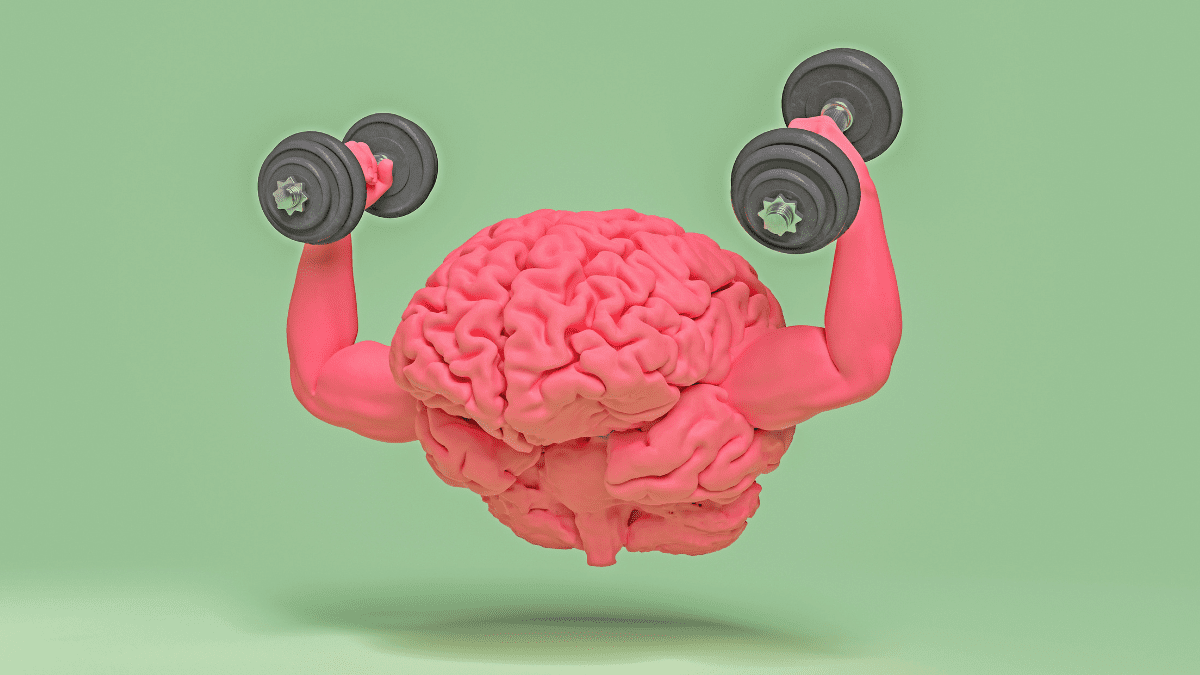Natural Help for ADHD and Autism: Regain Control Now
Natural help for ADHD and autism starts here—calm the chaos, reset your nervous system, and finally feel safe, seen, and focused in a world that misunderstood you.

In This Article
- What Is Natural Help for ADHD and Autism?
- 1. Why Natural Help for ADHD and Autism Is Gaining Momentum
- 2. Regulating the Nervous System: Core of Natural Help for ADHD and Autism
- 3. Nutrition and Supplements That Support Neurodivergent Brains
- 4. Mind-Body Practices for Focus, Calm, and Emotional Resilience
- 5. Building a Supportive Environment for Natural Help with ADHD and Autism
- Conclusion
- Natural Help for ADHD and Autism — FAQ
What Is Natural Help for ADHD and Autism?
Are You Always Pushing, But Never Settled?
If your mind is racing and your body’s tense before the day begins, you’re not alone. Many people with ADHD or autism feel like they’re constantly trying to catch up. Yet no matter how hard they try, focus slips, emotions run high, and the world feels too loud. That’s when it’s time to look inward—and explore what natural help for ADHD and autism can really offer.
Rather than pushing through discomfort, natural support gives you space to reconnect with yourself. It prioritizes safety, not speed. These tools don’t promise perfection. Instead, they create calm in the body and clarity in the mind—without over-relying on medication or pressure to “perform.”
In this guide, you’ll learn how nutrition, environment, breath, movement, and community shape your regulation. You’ll also explore science-backed practices that support emotional resilience, reduce overwhelm, and help you reclaim your energy—on your own terms.
If you’re already craving more stability and self-trust, this is where it begins. For a deeper dive into lifestyle resets that center nervous system well-being, don’t miss our holistic well-being guide.
Because your brain isn’t broken—it’s simply asking for support. And natural help for ADHD and autism is how you start listening.
1. Why Natural Help for ADHD and Autism Is Gaining Momentum
Why Are More People Turning to Natural Help for ADHD and Autism?
Standard treatments often fall short. While medication can be helpful for some, it rarely addresses the full experience. Many people still struggle with emotional overwhelm, sensory overload, and mental fatigue. Natural help for ADHD and autism is gaining momentum because it supports the whole person—not just the symptoms.
This shift isn’t just a trend. It’s a response to what’s been missing. More individuals and families are searching for tools that feel safe, sustainable, and effective long term. They want real support, not quick fixes.
What Does Holistic Support Offer as Natural Help for ADHD and Autism?
Natural approaches start by meeting your nervous system where it is. They focus on calming internal chaos and rebuilding balance. This can include:
- Sensory regulation tools that ease overstimulation
- Nutrition strategies to support brain and gut health
- Movement and breathwork that reset your emotional state
- Supportive environments that reduce pressure and noise
These aren’t extras. They’re essentials for living in alignment with your neurodivergent needs.
Why Is Burnout So Common in Neurodivergent Lives?
Burnout happens when the system is overloaded for too long. Many people with ADHD or autism mask their traits, push through discomfort, and ignore their body’s signals—until they crash. Natural help interrupts that cycle. It doesn’t just offer tools. It creates new patterns built around rest, rhythm, and regulation.
When you stop working against your brain and start working with it, you unlock more than just focus. You begin to heal.
2. Regulating the Nervous System: Core of Natural Help for ADHD and Autism
Why Is the Nervous System the Starting Point?
When your nervous system stays in survival mode, everything feels harder. Focus disappears. Emotions swing. Your body holds tension, even on slow days. That’s why natural help for ADHD and autism often begins here—by helping your system feel safe enough to soften.
You don’t need extreme routines. You need simple tools that reduce internal stress and help your body settle.

Which Sensory Tools Actually Make a Difference?
The right tools help you manage stimulation before it overwhelms you. They create a buffer between your brain and the world around you.
Try these to build sensory safety:
- Weighted blankets for calming deep pressure
- Noise-canceling headphones to cut through chaos
- Dim lights and soft colors to reduce visual stress
- Essential oils or soothing textures to gently ground you
Used regularly, these tools lower your baseline stress so you can focus more and react less.
How Does Movement Calm the System?
Movement regulates more than energy. It calms the body, slows racing thoughts, and shifts your state.
Even small movements help:
- Rocking, bouncing, or pacing
- Gentle yoga or floor stretches
- Dancing, swimming, or nature walks
The key isn’t intensity. It’s rhythm. Repetitive, body-led movement teaches your system that it’s safe to be still again.
Can Breathwork Really Reset Overload?
Absolutely. Your breath controls your state more than you might realize. Shallow, fast breathing signals danger. But slow, deep breaths send a different message: you’re safe now.
Practices like box breathing or 4-7-8 breathing can calm your system in just minutes. According to research on breathing techniques for anxiety, breathwork can reduce reactivity and improve focus—especially when done consistently.
You don’t need fancy tools. You just need to remember your breath is always with you.
3. Nutrition and Supplements That Support Neurodivergent Brains
Can Food Really Help With ADHD and Autism?
Absolutely—and it often does more than we expect. Many symptoms linked to ADHD and autism—like brain fog, irritability, and low energy—are worsened by nutritional gaps and inflammation. Natural help for ADHD and autism often starts in the kitchen, because what fuels your body shapes how clearly your brain functions.
When you focus on eating to regulate rather than restrict, you give your system the building blocks it needs to feel more balanced.
Which Foods Support Focus and Regulation?
Healing starts from within — explore this ADHD nutrition plan to reduce overwhelm and restore balance. Choosing the right foods helps steady your energy, support neurotransmitters, and calm the gut-brain axis. A few simple swaps can make a big difference:
- Healthy fats (like avocado, nuts, olive oil, and wild salmon) support brain structure and mood
- Complex carbs (such as oats, quinoa, and root vegetables) keep blood sugar stable
- Iron-rich and B-vitamin foods (like beans, spinach, and eggs) improve focus and memory
- Fermented foods (yogurt, kefir, kimchi) feed your gut with friendly bacteria
Over time, these foods can help reduce reactivity, improve clarity, and restore your energy reserves.
What Role Does the Gut-Brain Connection Play?
Your gut does more than digest food. It communicates directly with your brain. If your gut is inflamed or imbalanced, it can affect mood, focus, and even behavior.
Improving your gut microbiome with probiotic-rich foods, prebiotic fibers, and anti-inflammatory ingredients can lead to real shifts in how you feel and function. According to this guide on nutrition for ADHD and autism, focusing on whole, nutrient-dense meals can support cognitive performance and emotional health.
Are Supplements Worth Considering?
They can be. While food should come first, supplements help fill the gaps—especially during high-stress or low-appetite periods. Some of the most effective include:
- Omega-3s (especially EPA and DHA) for attention and emotional regulation
- Magnesium glycinate for calming the nervous system
- Zinc and B6 for neurotransmitter function
- Probiotics for gut health and mood balance
Add calm and clarity to your day with Bacopa’s natural benefits — and learn how this herb supports neurodivergent minds.
But before starting anything new, speak with a provider who understands neurodivergent physiology. Personalized guidance matters here.
4. Mind-Body Practices for Focus, Calm, and Emotional Resilience
Can Natural Help for ADHD and Autism Include Mind-Body Tools?
Definitely. Natural help for ADHD and autism goes beyond food or supplements. It includes how you move, breathe, and connect to your body. These tools don’t just calm symptoms. They help you feel safe in your own skin. When your body feels safer, your mind has more space to focus, regulate, and recover.
Mind-body practices are especially helpful because they teach you to listen inward. Over time, this creates more trust in your nervous system and your ability to self-soothe.
Which Practices Improve Focus and Reduce Stress?
There’s no need to meditate for hours. Short, consistent rituals are often more effective. Some practices can be done anywhere, anytime:
- Breathwork like box breathing or 4-7-8 to reset anxiety
- Body scans to reconnect and release tension
- Grounding through gentle touch, walking barefoot, or lying down
- Sound-based tools such as humming, drumming, or binaural beats
- Somatic movement like bouncing, rocking, or shaking off stress
These aren’t trends. They’re survival tools for sensitive systems.
How Does Mindfulness Support Neurodivergent Brains?
Mindfulness doesn’t have to mean stillness. In fact, moving or sensory-rich mindfulness can work better for ADHD and autism. For example, mindful walking or body-led breathwork can slow your thoughts without forcing silence.
According to this article on mindfulness and ADHD, regular practice improves attention, impulse control, and emotional regulation—even when done in short sessions.
The key is to start small. Even two minutes of mindful presence can shift your state.
What If You Struggle to Stay Consistent?
That’s okay. Your nervous system thrives on rhythm—not perfection. Instead of rigid routines, aim for flexible structure. Stack your practices onto existing habits. Tie breathwork to brushing your teeth. Stretch before meals. Add music while grounding.
If you miss a day, start again gently. These tools aren’t about performance. They’re about remembering you have options—especially when life feels too much.

5. Building a Supportive Environment for Natural Help with ADHD and Autism
How Can Your Environment Support Natural Help for ADHD and Autism?
Your surroundings can either calm your system—or keep it on edge. For neurodivergent individuals, a noisy, cluttered, or overstimulating space drains energy fast. That’s why creating a supportive environment is a key part of natural help for ADHD and autism. It allows your nervous system to relax, so focus and clarity can return.
Simple changes can make a big difference:
- Use soft, warm lighting instead of overhead brightness
- Add noise reduction with curtains, rugs, or headphones
- Simplify your visual field by clearing clutter and using calm colors
- Designate safe zones—a sensory corner, reading nook, or quiet rest space
Start small. As you notice what feels good, build from there.
What Lifestyle Habits Support Natural Help for ADHD and Autism?
You don’t need rigid routines. You need supportive rhythms. Gentle, consistent habits help regulate your energy and emotions.
Try these ideas:
- Wake and rest at regular times, even on weekends
- Eat steady meals, rich in protein, fat, and fiber
- Take body-led movement breaks every few hours
- Use visual reminders or checklists to ease task-switching
- Schedule downtime, not just tasks
When practiced regularly, these habits lower stress and make daily life feel more manageable.
Why Community Matters on a Natural Healing Path
Healing doesn’t happen in isolation. Co-regulation—the feeling of being safe with others—helps your nervous system reset. Whether it’s a trusted friend, support group, or online community, connection creates resilience.
If socializing feels hard, start small. Try low-stimulation meetups. Seek spaces that honor neurodivergence. Over time, connection becomes a resource, not a stressor.
According to this guide to ADHD-friendly environments, surroundings and social support both significantly impact attention, regulation, and emotional health.
What Boundaries Help You Stay Regulated?
Boundaries are not barriers. They’re nervous system protectors. Saying no, taking space, or changing plans aren’t selfish—they’re survival strategies.
Try:
- Pausing before responding
- Leaving when your body says it’s time
- Choosing what to say yes to—not what you “should” do
You deserve spaces, routines, and relationships that feel safe. Boundaries help you protect that safety—without apology.
Conclusion
You don’t need to push harder—you need to feel safer. That’s where natural help for ADHD and autism begins. It’s not about perfect routines or following someone else’s plan. It’s about learning what actually works for your body, your brain, and your life.
By now, you’ve seen that healing happens through layers, not extremes. Every area we explored—nutrition, breath, movement, space, and support—offers a tool you can come back to when things feel too much.
Let’s recap what supports your nervous system best:
- Nourishing your brain and gut with real food and targeted nutrients
- Creating calm environments that reduce sensory overload
- Practicing breathwork and movement to bring your body back to baseline
- Choosing mindfulness and somatic tools that match your energy
- Building rhythms and boundaries that protect your capacity
- Staying connected to people who get it, even in small ways
Each step you take in this direction sends your body a message: I hear you. I’ve got you. We’re safe to soften.
So choose one small shift. Maybe today, you dim the lights. Or you stretch before bed. Or you pause, breathe, and notice how far you’ve already come.
You’re not broken. You’re built differently. And now you have tools that work differently, too.
Natural help for ADHD and autism isn’t a backup plan. It’s a path back to yourself—one that leads to more presence, more peace, and more power in your hands.
Natural Help for ADHD and Autism — FAQ
What are the best natural remedies for ADHD and autism in adults?
For adults, the most effective natural remedies include omega-3 supplements, magnesium glycinate, and high-protein, low-sugar diets to support focus and reduce emotional reactivity. Adding daily breathwork or meditation, even for five minutes, helps regulate the nervous system. To make it sustainable, start with a morning routine that includes hydration, movement, and a balanced meal—this foundation can shift how your entire day feels.
How can I support my child with ADHD naturally at home?
Start with their environment. Reduce background noise, dim the lighting, and create predictable routines. Add protein and healthy fats to each meal to stabilize energy and attention. Tools like sensory swings, weighted blankets, and visual timers can help them feel more regulated. Keep transitions gentle, and offer body breaks often. Most importantly, validate their experience—it helps their nervous system feel safe enough to self-regulate.
What diet is best for managing ADHD and autism symptoms naturally?
A supportive ADHD and autism-friendly diet focuses on whole foods, healthy fats, and low glycemic carbs. Try to reduce processed sugar and artificial dyes. Include foods rich in omega-3s (like wild salmon or flaxseed), iron, zinc, and B-vitamins to support brain function. Don’t skip meals—stable blood sugar helps stabilize mood and focus. Consider tracking symptoms alongside meals to spot patterns and tailor what works best for you.
Created by Lili Vu, holistic health & nutrition coach in training. Deeply passionate about mind-body healing, nourishment, and intentional living — practices I’ve lived, tested, and continue to grow through. Embracing my ADHD and supporting my partner through a life-altering stroke transformed how I understand the nervous system, resilience, and healing. I explore holistic well-being practices including yoga, plant-based nutrition, gut and hormone health, trauma recovery, and mindful habit change — all rooted in my personal healing journey. 🌿







